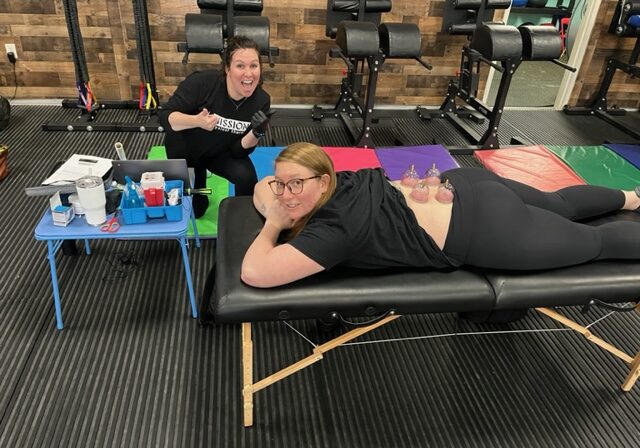 What Your Nervous System Has to Do With Low Back Pain
What Your Nervous System Has to Do With Low Back Pain
(And Why It Might Be the Missing Piece in Your Recovery)
Low back pain is one of the most common reasons people seek care — whether from lifting something wrong, sitting too long, or dealing with an old injury that keeps coming back. Most people think it’s all about muscles, joints, or discs. But there’s another key player that’s often overlooked- your nervous system!
 Your nervous system can make back pain feel worse — or linger longer — even after the original issue has improved.
Your nervous system can make back pain feel worse — or linger longer — even after the original issue has improved.
 Pain Isn’t Always About Damage
Pain Isn’t Always About Damage
Pain is a warning system. But in some cases, your brain and nervous system can become too protective — especially after an injury, a stressful period, or repeated flare-ups.
This means the pain you feel might not always match the amount of tissue damage. Your brain is interpreting normal movement or pressure as a threat, so the pain keeps getting triggered — even if nothing is being harmed.
This is especially common if:
- Your pain comes and goes without a clear pattern
- It flares up when you’re stressed or tired
- It feels worse than expected based on what your body’s actually doing
 Fight-or-Flight and Back Pain
Fight-or-Flight and Back Pain
When the nervous system stays stuck in “fight-or-flight” mode (also known as sympathetic dominance), your muscles — especially around your back — stay tense. Your breathing becomes shallow, and your body stays in protection mode. This can increase pain sensitivity, create tightness, and slow down recovery.
 What Helps Calm the Nervous System?
What Helps Calm the Nervous System?
Pain is real. But calming the nervous system can help your brain and body stop overreacting — and make it easier to recover.
1. Diaphragmatic Breathing
Deep, slow belly breathing activates your parasympathetic system (your “rest and digest” mode).
Try this:
- Inhale through your nose for 4 seconds
- Exhale slowly through your mouth for 6–8 seconds
- Do this for 2–5 minutes a couple times per day
2. Gentle, Safe Movement
When you move without fear or strain, your nervous system gets the message that you’re safe — which helps dial pain down over time.
Try:
- Pelvic tilts while lying down
- Knees-to-chest stretches
- Cat-cow movement
These don’t need to be intense — just safe and consistent.
3. Hands-On Input and Sensory Reassurance
Light manual therapy, mobilization, or even soft pressure can help the nervous system re-map how it feels about the painful area. It’s about creating a sense of safety through touch and movement.
4. Pay Attention to Stress and Recovery
Stress, poor sleep, and burnout can all make your nervous system more sensitive. When you’re in pain, your system is already on edge — so improving recovery habits (sleep, nutrition, breath work) can play a major role in how your back feels.
 The Takeaway
The Takeaway
Yes, back pain can involve joints, discs, or muscles — but the nervous system plays a huge role in how much it hurts and how long it lasts.
If you already have back pain, a heightened or dysregulated nervous system can turn up the volume, make it harder to move, and create fear around activity — which keeps you stuck in a loop. The good news? We can work with that system, not against it.

